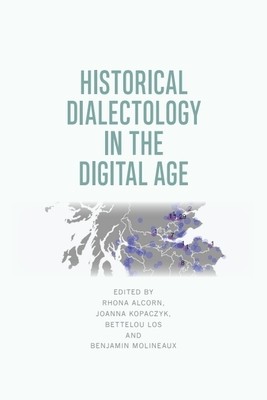
- We will send in 10–14 business days.
- Publisher: Edinburgh University Press
- ISBN-10: 1474430538
- ISBN-13: 9781474430531
- Format: 16 x 23.9 x 2.3 cm, hardcover
- Language: English
- SAVE -10% with code: EXTRA
Historical Dialectology in the Digital Age (e-book) (used book) | bookbook.eu
Reviews
Description
Lays out key corpus-building strategies for working with regional data at different levels of linguistic analysis: syntax, lexicon, morphology, and phonetics/phonology. Shows how traditional methods of Historical Dialectology can benefit from new methods of data-collection to test out theoretical and empirical claims. Highlights opportunities and pitfalls for analysing the relation between sound systems and spellingsDrawing on the resources created by the Institute of Historical Dialectology at the University of Edinburgh (now the Angus McIntosh Centre for Historical Linguistics), such as eLALME (the electronic version A Linguistic Atlas of Late Medieval English), LAEME (A Linguistic Atlas of Early Middle English) and LAOS (A Linguistic Atlas of Older Scots), this volume illustrates how traditional methods of historical dialectology can benefit from new methods of data-collection to test out theoretical and empirical claims. In showcasing the results that these resources can
yield in the digital age, the book highlights novel methods for presenting, mapping and analysing the quantitative data of historical dialects, and sets the research agenda for future work in this field.
- Publisher: Edinburgh University Press
- ISBN-10: 1474430538
- ISBN-13: 9781474430531
- Format: 16 x 23.9 x 2.3 cm, hardcover
- Language: English English
Lays out key corpus-building strategies for working with regional data at different levels of linguistic analysis: syntax, lexicon, morphology, and phonetics/phonology. Shows how traditional methods of Historical Dialectology can benefit from new methods of data-collection to test out theoretical and empirical claims. Highlights opportunities and pitfalls for analysing the relation between sound systems and spellingsDrawing on the resources created by the Institute of Historical Dialectology at the University of Edinburgh (now the Angus McIntosh Centre for Historical Linguistics), such as eLALME (the electronic version A Linguistic Atlas of Late Medieval English), LAEME (A Linguistic Atlas of Early Middle English) and LAOS (A Linguistic Atlas of Older Scots), this volume illustrates how traditional methods of historical dialectology can benefit from new methods of data-collection to test out theoretical and empirical claims. In showcasing the results that these resources can
yield in the digital age, the book highlights novel methods for presenting, mapping and analysing the quantitative data of historical dialects, and sets the research agenda for future work in this field.


Reviews